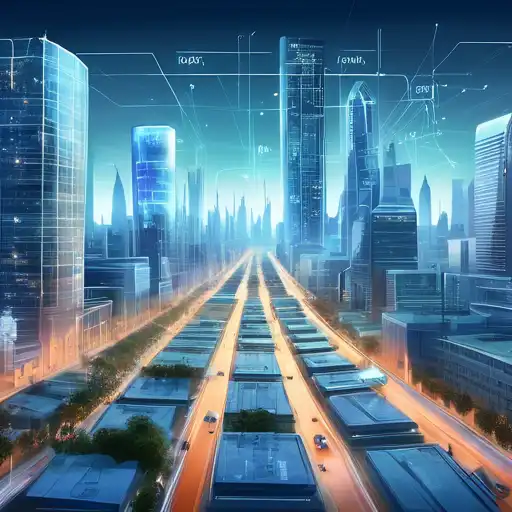Introduction to IoT and Smart Cities
The Internet of Things (IoT) is revolutionizing the way cities operate, making them smarter, more efficient, and more responsive to the needs of their inhabitants. By connecting devices, vehicles, and infrastructure to the internet, cities can collect and analyze data to improve services, reduce costs, and enhance the quality of life for residents.
Key Areas Where IoT is Making an Impact
From traffic management to waste disposal, IoT technologies are being deployed across various sectors to create more sustainable and livable urban environments. Here are some of the key areas where IoT is making a significant impact:
- Traffic and Transportation: IoT-enabled sensors and smart traffic lights help reduce congestion and improve public transportation systems.
- Energy Efficiency: Smart grids and meters allow for more efficient energy use, reducing costs and environmental impact.
- Public Safety: Surveillance cameras and sensors can detect and respond to incidents faster, making cities safer.
- Waste Management: Smart bins and waste collection systems optimize routes and schedules, leading to cleaner streets.
Benefits of IoT in Urban Development
The integration of IoT technologies into city infrastructure offers numerous benefits, including:
- Enhanced efficiency and cost savings for city operations.
- Improved public services and quality of life for residents.
- Greater sustainability through reduced energy consumption and waste.
- Increased safety and security through real-time monitoring and response.
Challenges and Considerations
Despite its potential, the adoption of IoT in smart cities faces several challenges, such as privacy concerns, cybersecurity risks, and the need for significant investment in infrastructure. Addressing these issues is crucial for the successful implementation of IoT solutions.
Future Prospects
As technology continues to evolve, the possibilities for IoT in smart cities are endless. Innovations such as 5G networks and artificial intelligence will further enhance the capabilities of IoT, paving the way for even smarter and more connected urban environments.
Conclusion
The role of IoT in transforming urban landscapes cannot be overstated. By leveraging the power of connected devices and data analytics, cities can become more efficient, sustainable, and livable. The journey towards smart cities is just beginning, and IoT is at the heart of this transformation.
For more insights into how technology is shaping our future, explore our technology trends section.
